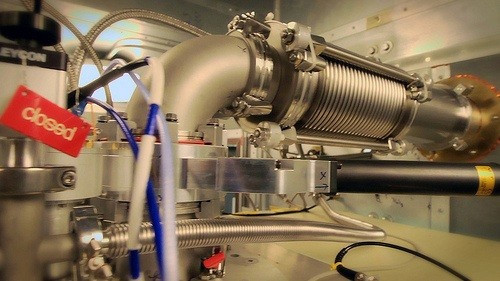IBM Physicists Report New Breakthrough for Quantum Computing

Researchers at IBM (NYSE: IBM), the No. 2 computer services company, have passed thresholds since Jan. 2 whose promise could yield quantum computers within our lifetime, IBM's Manager of Physics of Information said Tuesday.
In the past seven weeks, IBM physicists using superconducting technology at temperatures around absolute zero have achieved computing at a coherent state, physicist Mark Ketchen said.
Shares of IBM fell $1.10 to $196.88 early Wednesday. They set a 62-week high last week.
The experiment lasted for only a ten-thousandth of a second, the IBM researcher said. The attempt to achieve a quantum state was stable, or coherent, enough to suggest that if repeated and made to last longer, a working quantum computer could be made.
Ketchen, principal investigator of IBM's superconducting quantum device systems for future computing applications, and other colleagues Tuesday presented their findings before the American Physical Society.
If successful, attempts by IBM, using supercooled technology, or rivals, using ion-trap technologies, may develop a future supercomputer that would prove the concept of quantum computing while drastically improving computing speeds.
Conventional computers, including PCs and smartphones, process information using bits of information, which are all either 1's or 0's. In quantum computing, the field suggested by Nobel Laureate in Physics Richard Feynmann, the information is processed using quantum bits or qubits which function as both.
Conventional computing can't handle qubits, said Ketchen, who holds a doctorate in physics from the University of California, Berkeley. Researchers at IBM's Watson Research Labs in Yorktown Heights, N.Y., have worked on superconductivity for years, so they tried to create qubits at supercold temperatures, around minus-459 Fahreinheit or 0 on the Kelvin scale, and lower, such as 20 millikelvin.
Lasted only 100 microseconds
The first attempts to create a so-called coherent state where quantum computing works lasted only 100 microseconds, Ketchen said. But even in that short time a computer could perform functions far beyond the range of IBM's current Watson supercomputer and its rivals.
IBM didn't solely rely on its own work, Ketchen said. Part of the successful experiment was based on research by Yale physicist Robert Schoelkopf.
Now that IBM has published its findings, the next step is to try to repeat the quantum state but to extend its duration, Ketchen explained. As well, now that the IBM team has succeeded with two qubits, it would like to try to double and triple the number.
Ketchen said that for reasons the team doesn't yet understand, the temperature and use of a specialized qubit device crossed a threshold of stability. So if it can repeated and advanced, the work might prove easier.
As well, because the team is working with materials and somewhat conventional computing layouts, it may be able to develop a working quantum computer faster than with unconventional systems.
Competing quantum teams
Ketchen said other groups are working on different approaches to quantum computing, mainly in university laboratories in the U.S., Japan and Germany. He didn't cite other companies.
To be sure, even if IBM ultimately builds a working quantum machine, chances are it will have to be housed on-premises, so that users would have to access it through the Internet or with time-sharing.
Development is still a long way off, Ketchen said. Materials scientists will likely have to devise new compounds for electronics to work at supercold temperatures.
It helps to be at a place like IBM that has the resources for this kind of research, Ketchen said. Last year, the company reported spending $6.26 billion, or nearly 6 percent of revenue, on research and development.
© Copyright IBTimes 2024. All rights reserved.






















